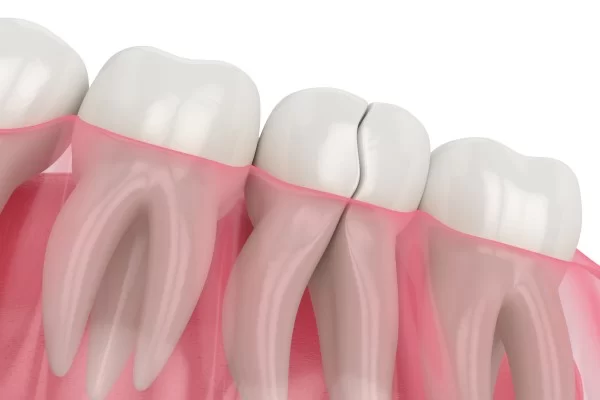
Restorative Dentistry for Broken Teeth: How to Repair and Restore Your Smile
If you've ever experienced a broken tooth, you're not alone. Whether due to an accident, tooth decay, or age, broken teeth are a common dental issue. Fortunately, restorative dentistry offers various treatments to restore your tooth and protect your smile. In this article, we’ll delve into the different types of dental restoration methods available for broken teeth, how they work, and what you need to know to make the best choice for your dental health.
- What is Restorative Dentistry?
- Common Causes of Broken Teeth
- Restorative Options for Broken Teeth
- Real-Life Examples of Tooth Restoration
- How to Choose the Right Treatment for Broken Teeth
- Conclusion and How to Get Started with Restorative Dentistry
1. What is Restorative Dentistry?
Restorative dentistry is a branch of dental care focused on repairing or replacing damaged teeth. It involves procedures designed to restore the function, health, and appearance of your teeth. From filling cavities to dental crowns and implants, restorative dentistry covers a wide array of treatments. The goal is to improve the health and appearance of your teeth, making sure they function properly while ensuring a natural look.
2. Common Causes of Broken Teeth
There are numerous reasons why teeth may break, and understanding these causes can help prevent future damage. Some of the most common reasons include:
- Accidents: A sudden blow or fall can cause teeth to break, especially if there’s a direct impact.
- Tooth Decay: Cavities can weaken the structure of a tooth, making it more prone to breaking under pressure.
- Chewing Hard Objects: Biting down on hard foods, like ice or candy, can cause teeth to crack or break.
- Aging: Over time, teeth naturally wear down and become more susceptible to damage.
3. Restorative Options for Broken Teeth
When it comes to repairing broken teeth, restorative dentistry offers several options. Let’s explore the most popular treatments:
3.1 Dental Crowns
Dental crowns are one of the most common solutions for broken teeth. A crown is a cap placed over the damaged tooth to restore its shape, size, and strength. Crowns are typically made from durable materials such as porcelain, metal, or a combination of both. They not only protect the tooth but also improve its appearance, making it look natural.
3.2 Fillings
If the damage to the tooth is not extensive, dental fillings can be a suitable option. Fillings are used to restore the tooth’s shape and function after it has been cleaned of decay. Materials used for fillings include silver amalgam, composite resins, and gold. These materials are designed to match the color of your natural teeth for a more discreet appearance.
3.3 Dental Implants
For severely broken teeth or teeth that cannot be repaired, dental implants may be the best solution. An implant is a titanium post inserted into the jawbone to replace a missing tooth. After the implant heals, a crown is placed on top to restore the appearance and function of the tooth.
4. Real-Life Examples of Tooth Restoration
To better understand how restorative dentistry works, let's look at a few real-life examples:
One of our patients, John, suffered a broken tooth after a fall during a weekend hike. The damage was significant, and after consulting with his dentist, he decided to opt for a dental crown. Within a few weeks, John had a brand-new crown that restored his tooth, gave him back his confidence, and allowed him to chew without discomfort.
Another patient, Sarah, had a large cavity that weakened her back tooth. Rather than extracting the tooth, her dentist suggested a filling to restore its function. Sarah chose a tooth-colored filling to match her natural teeth, and she was thrilled with the result. The filling restored her tooth's strength and appearance without the need for a crown.
5. How to Choose the Right Treatment for Broken Teeth
Choosing the right restorative treatment depends on several factors, including the extent of the damage, the location of the tooth, and your budget. If the damage is minor, fillings or bonding may be enough. For more significant damage, dental crowns or implants might be necessary. Your dentist will help you make the best decision based on your specific needs.
6. Conclusion and How to Get Started with Restorative Dentistry
Restorative dentistry offers effective solutions for repairing broken teeth, restoring your smile, and enhancing your dental health. Whether you're dealing with a small chip or a severely broken tooth, there is a solution tailored to your needs. By consulting with a skilled dentist, you can explore the best options available, such as dental crowns, fillings, and implants, to ensure your teeth are both functional and beautiful.
If you're considering restorative dentistry, it’s important to consult with a qualified professional who can guide you through the process. Reach out to a trusted dental office today to schedule your consultation and begin your journey to a healthier, more confident smile!







 Lake Minnetonka Orthodontics4.0 (40 review)
Lake Minnetonka Orthodontics4.0 (40 review) Grzybicki Family Dentistry0.0 (0 review)
Grzybicki Family Dentistry0.0 (0 review) Studio Dental Arts5.0 (10 review)
Studio Dental Arts5.0 (10 review) Palo Alto Oral Health4.0 (18 review)
Palo Alto Oral Health4.0 (18 review) Coastline Dental - Dr. Randal Leoni5.0 (63 review)
Coastline Dental - Dr. Randal Leoni5.0 (63 review) Commonwealth Orthodontics & Pediatric Dentistry5.0 (279 review)
Commonwealth Orthodontics & Pediatric Dentistry5.0 (279 review) The Importance of Oral Health Education During Pregnancy for a Healthy Pregnancy
The Importance of Oral Health Education During Pregnancy for a Healthy Pregnancy Best Tips for Brushing Your Teeth Properly for Healthy Gums: Essential Techniques for Oral Health
Best Tips for Brushing Your Teeth Properly for Healthy Gums: Essential Techniques for Oral Health Why Skipping Dental Checkups Can Lead to Bigger Oral Health Problems
Why Skipping Dental Checkups Can Lead to Bigger Oral Health Problems Advantages of Porcelain Dental Restorations
Advantages of Porcelain Dental Restorations How Can Diabetes Cause Tooth and Gum Problems? Preventing and Managing Oral Health Issues
How Can Diabetes Cause Tooth and Gum Problems? Preventing and Managing Oral Health Issues Healthy Habits for Promoting Good Oral Health and Hygiene: Tips for a Healthy Smile
Healthy Habits for Promoting Good Oral Health and Hygiene: Tips for a Healthy Smile